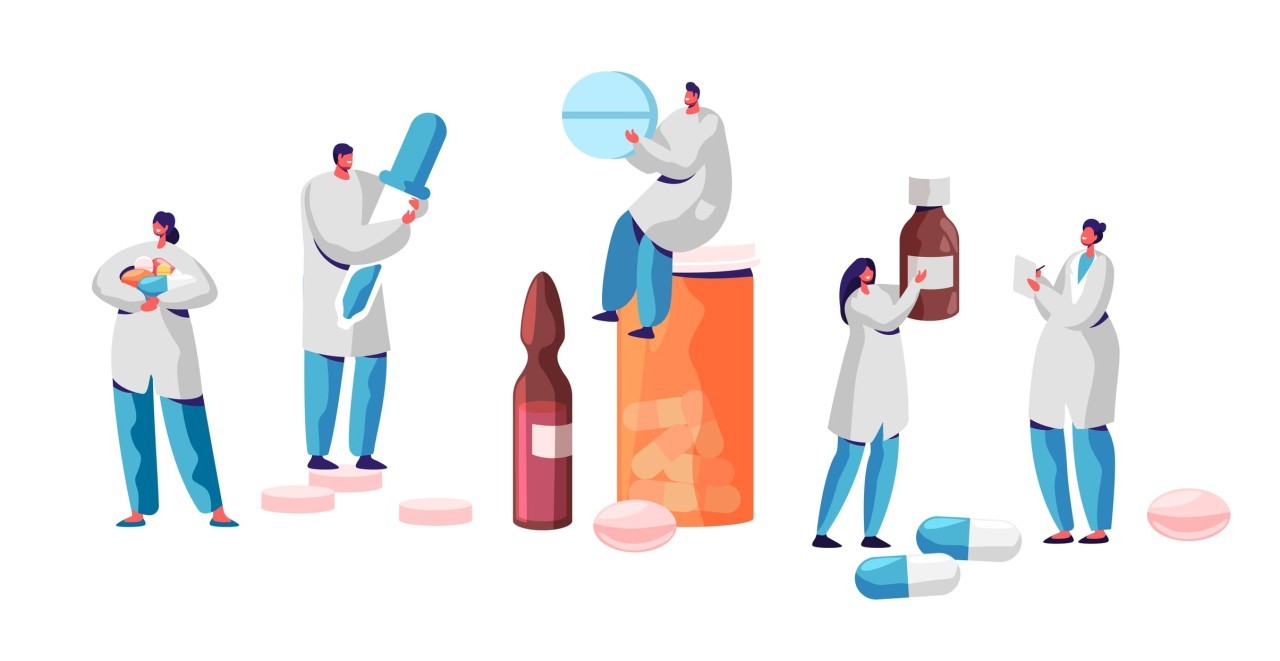-
Engage in Experiential Learning:Participate in clinical rotations and other hands-on opportunities to apply your knowledge in real-world settings and build practical skills.
-
Develop Key Soft Skills:Focus on communication, patient counseling, problem-solving, and management, as these are highly valued and can distinguish you in the job market.
-
Embrace Active Recall:Instead of passive review, use active recall and spaced repetition to better retain and understand complex pharmaceutical and biological concepts.
-
Cultivate Relationships:Build strong connections with professors and preceptors to gain valuable insights, advice, and opportunities for recommendations.
-
Stay Open-Minded:Your initial career goals may change; be open to exploring different pharmacy paths and fields, allowing your experiences to guide your decisions.
-
Network Early:Utilize rotations as a chance to network with professionals and explore various healthcare settings, from community pharmacies to hospitals.
-
Prioritize Mental Health:Pursue personal interests and maintain a healthy lifestyle to prevent burnout, which is crucial for navigating the demanding nature of pharmacy studies.
-
Manage Expectations:Set realistic goals for yourself and understand your limits to ensure your well-being and promote career longevity.
-
Understand the ROI:A pharmacy degree offers a financially sound return on investment, providing a stable career with good earning potential.
-
Remember Your Motivation:Keep sight of your original reasons for choosing pharmacy to maintain perspective and motivation during challenging times.To make pharmacy education worthwhile, it needs to shift from a traditional, memorization-heavy model to one that prepares graduates for the expanded clinical and technological roles of modern practice. Key strategies include modernizing the curriculum, prioritizing experiential learning, emphasizing professional and communication skills, integrating technology, and addressing systemic issues like high student debt and burnout.Modernize the curriculum
-
- Move to competency-based education: Re-evaluate and redesign the curriculum to focus on skills and outcomes, preparing graduates for new practice areas like patient care, population health, and systems management.
- Reduce foundational theory: Offload some of the extensive foundational knowledge, such as basic information storage and retrieval, using technology to make room for active, case-based learning.
-
- Integrate specialty topics: Add elective courses and advanced training in areas such as pharmacogenomics, precision pharmacotherapy, and critical care to diversify career pathways for graduates.
- Promote lifelong learning: Instill a mindset of continuous professional development, as the field is constantly changing. This can involve workshops, certification courses, and encouraging engagement with professional organizations.
Prioritize high-quality experiential learning- Provide diverse experiences: Broaden clinical rotations to expose students to various settings beyond traditional community and hospital pharmacies, including specialty pharmacies, managed care, and industry. Students should also gain experience in rural and underserved areas.
- Foster clinical reasoning: Offer problem-based and inquiry-based learning in small groups to help students apply knowledge and develop critical thinking and decision-making skills.
-
- tructure internship programs: Create robust internship programs with clear learning objectives and preceptor guidelines to ensure students are actively involved in patient care, rather than passively observing.
- Enhance interprofessional collaboration: Integrate more interprofessional education (IPE) opportunities to train students to work alongside other healthcare professionals as part of a team.
Emphasize professional and communication skills- Build patient communication skills: Increase opportunities for students to build comfort and confidence in counseling patients on their medications and promoting wellness.
- Develop advocacy and leadership: Incorporate training that builds leadership and advocacy skills, preparing future pharmacists to expand their role as providers and lead within the healthcare system.
- Offer robust mentorship: Facilitate strong relationships between students, faculty, and experienced pharmacists to provide guidance and support throughout pharmacy school and beyond.
-
Integrate modern technology
- Utilize digital learning platforms: Incorporate e-learning platforms, virtual simulations, and interactive quizzes to make learning more dynamic and engaging.
- Teach health informatics and data analytics: Equip students with the skills to use technology to access, interpret, and manage patient data, which is essential for modern pharmacy practice.
- Introduce telepharmacy: Offer telepharmacy and remote experiential learning opportunities to prepare students for the evolving landscape of telehealth services.
Address systemic and support issues- Create a culture of wellness: Acknowledge the intense academic pressure and high burnout rates in the profession. Pharmacy schools should provide counseling and wellness resources to help students and faculty manage stress.
- Support students financially: Recognize the significant financial burden of pharmacy school. Schools should help students apply for scholarships and leverage resources to manage the cost.
- Ensure faculty development: Invest in and retain qualified faculty who can teach with contemporary methods. Experienced educators are crucial for bridging the gap between theoretical knowledge and practical application.
- Foster an agile mindset: Instill flexibility, adaptability, and an entrepreneurial spirit so graduates can embrace an evolving practice landscape and advocate for an expanded scope of practice.
-
Challenges in Pharmacy Education
-
Pharmacy education plays a pivotal role in shaping competent healthcare professionals who contribute to patient care and public health. However, despite its significance, pharmacy education faces several challenges that impact students, educators, and the overall healthcare system.
Evolving Curriculum and Industry Expectations
One of the primary challenges in pharmacy education is the need for a constantly evolving curriculum. With rapid advancements in pharmaceuticals, biotechnology, and personalized medicine, traditional curricula often struggle to keep pace. Institutions must integrate emerging topics such as pharmacogenomics, digital health, and artificial intelligence in healthcare to ensure graduates are well-prepared for the evolving industry demands.
Shortage of Experienced Faculty
The shortage of qualified and experienced faculty members is another significant challenge. As the field of pharmacy expands, there is a growing need for educators who can bridge the gap between theoretical knowledge and practical applications. Limited faculty resources can affect the quality of education and mentorship provided to students.
Limited Practical Exposure
While theoretical knowledge is crucial, practical training is equally important in pharmacy education. Many institutions face challenges in providing students with sufficient hands-on experience in clinical settings, pharmaceutical industries, and research laboratories. This limitation affects students’ ability to apply their knowledge effectively in real-world scenarios.
Integration of Technology in Learning
The integration of technology in pharmacy education, such as virtual simulations and e-learning platforms, presents both opportunities and challenges. While technology can enhance learning experiences, many institutions lack the infrastructure and resources to implement these innovations effectively. Additionally, students and faculty must adapt to new digital tools, which can be a learning curve.
Regulatory and Accreditation Challenges
Pharmacy education is governed by regulatory bodies that establish guidelines for curriculum development and accreditation. However, differences in accreditation standards across countries and frequent updates to regulatory requirements pose challenges for institutions in maintaining compliance while ensuring high-quality education.
Rising Educational Costs
The cost of pharmacy education is rising globally, making it difficult for many students to afford tuition fees and associated expenses. High education costs can limit access to pharmacy programs and contribute to student debt, which may deter potential students from pursuing a career in pharmacy.
Workforce Readiness and Job Market Competition
With an increasing number of pharmacy graduates entering the job market, there is growing competition for employment opportunities. Many students struggle to secure positions that align with their training and aspirations. Institutions must focus on enhancing career counseling and industry collaborations to improve employment prospects for graduates.
Conclusion
Pharmacy education faces numerous challenges that must be addressed to ensure the continuous growth and development of the profession. By evolving curricula, investing in faculty development, expanding practical training opportunities, and integrating technology effectively, institutions can better prepare students for the dynamic healthcare landscape. Collaborative efforts between academia, industry, and regulatory bodies are essential to overcoming these challenges and fostering a robust future for pharmacy education.
-
-



